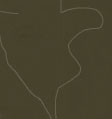Prairie Restoration
In 1970, the Living Prairie Museum Preserve was set-aside and part of the area was identified as a disturbed area. In 1977, the disturbed area was turned into a restoration project, where the objectives were: 1) to determine methods of seed propagation; 2) to determine the viability of native prairie seeds; and 3) to promote prairie restoration. This project was undertaken by cultivating the site and broadcasting wild oats, as well as hand broadcasting seeds originally from Oregon.
The conclusions reached from this project were: 1) none of the planted seeds germinated within the first 6 weeks; 2) the viability of the seeds to germinate depends on its local availability, in other words, the plants must grow in a 80-100km range from the restoration project; and 3) the seed bed preparation and soil conditions for the plant needs must be further researched. Some of the more fortunate results from this project included seeing some unique plants, which would not otherwise be found in the area, including Purple coneflower (Echinacea), Rosen weed, and Tall-compass plant.
 previous virtual hike
previous virtual hike